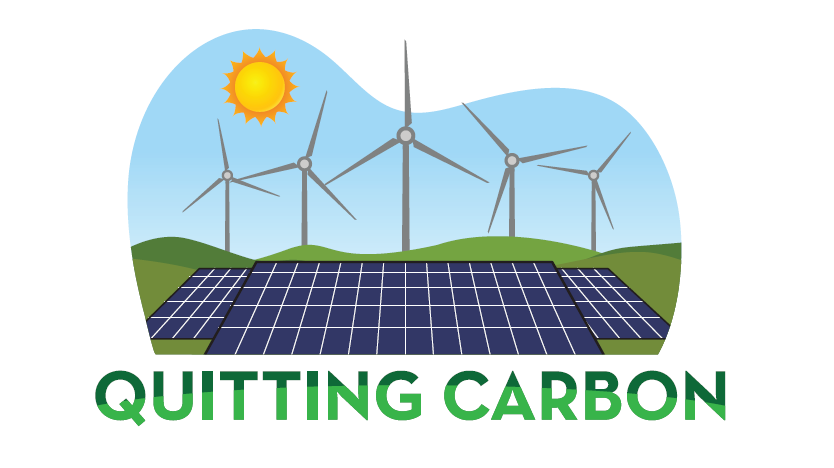Lawsuits that reach state supreme courts could drive climate action during Trump 2.0
The Montana Supreme Court just handed young climate activists a landmark victory by affirming the state constitutional right to a clean environment. It could provide a template for action at other state supreme courts over the next four years.

Quitting Carbon is a reader-supported publication. To support my work, please consider becoming a paid subscriber or making a one-time donation.
Anyone who cares about the climate crisis should be worried about what the conservative majority on the U.S. Supreme Court could do over the next four years to further hinder the federal government’s ability to force big polluters to reduce their emissions.
The Court’s conservative majority has already constrained how the U.S. Environmental Protection Agency can regulate pollution from power plants and overturned the decades-long precedent under which judges deferred to federal agencies’ interpretation of the law when implementing legislation.
So, with federal climate action threatened by a hostile White House and Supreme Court during Trump 2.0, where else should we look for progress on decarbonizing the economy over the next four years?
State and local governments, for certain. Legislatures and city councils pushed ahead on climate action during Trump’s first term and will do so again over the next four years.
But what about state supreme courts?
An important feature story published by Eyal Press in The New Yorker earlier this year argued that advocates can look to state supreme courts to preserve or even expand rights not found in the U.S. Constitution. Press’ story, published in June, is even more salient today, with voters having returned Trump to the White House, putting him in charge once again of appointments to the federal judiciary.
“Not only do state constitutions generally express a stronger commitment to democracy than the U.S. Constitution does; they enumerate many rights and protections that have no federal analogue. ... Many state constitutions also affirm positive rights absent from the U.S. Constitution,” wrote Press.
Press cited the right to “social welfare” enshrined in New York’s constitution and the right to “produce and consume the food of their own choosing” guaranteed by the constitution of Maine. He also mentioned the right to “a clean and healthful environment” added to the Montana Constitution in 1972. Hawaii added the same provision to its constitution in 1978.
This provision was the crux of a landmark ruling issued yesterday by the Montana Supreme Court.
In Held v. Montana, a lawsuit filed in 2020, a group of Montana youth plaintiffs invoked the constitutional right to environmental protection to challenge the state government’s lack of action to respond to the climate crisis, and specifically a provision in state law that had allowed state agencies to ignore greenhouse gas emissions when conducting reviews of energy projects under the Montana Environmental Policy Act (MEPA).
On Wednesday, the Montana Supreme Court ruled in favor of the youth plaintiffs. A 6-1 majority (with one justice joining the majority in a concurring opinion) found the provision limiting MEPA reviews “unconstitutional.”
“Plaintiffs have standing to challenge the injury to their constitutional right to a clean and healthful environment. Montanans’ right to a clean and healthful environment was violated by the MEPA Limitation, which precluded an analysis of GHG emissions in environmental assessments and environmental impact statements during MEPA review,” Chief Justice Mike McGrath wrote for the majority.
The majority also affirmed that “Montana’s right to a clean and healthful environment and environmental life support system includes a stable climate system, which is clearly within the object and true principles of the Framers inclusion of the right to a clean and healthful environment.”
Ease of amending state constitutions
One advantage of a state-focused courts strategy is the fact that it is so much easier to amend state constitutions than it is to amend the U.S. Constitution.
The U.S. Constitution has been amended just 27 times over the nation’s history. Meanwhile, “the current constitutions of the 50 states have been amended around 7,000 times,” John Dinan, a professor of politics and international affairs at Wake Forest University, wrote at the State Court Report last year.
Legislatures generate more than 80% of these state constitutional amendments, according to Dinan. Most of the rest are adopted in the 17 states that allow for amendments to be enacted via citizen-initiative processes.
In a handful of states, constitutional amendments are adopted multiple times each year.
“The constitutions of Alabama, Louisiana, South Carolina, Texas, and California are amended more than three to four times per year, on average,” wrote Dinan.
With multiple paths for amending constitutions in individual states, climate and clean energy advocates could push for the adoption of amendments in some or all the 50 states over the next four years.
If enough states follow Montana and Hawaii’s lead in enshrining the right to a clean environment, or even a stable climate system, in their constitutions, not only would it help to advance climate action in individual states at a time when federal action will be under assault, it could build momentum for the adoption of these same rights at the federal level, too.
With the U.S. Supreme Court poised to stymie federal climate action for years to come, it could be state supreme court rulings on lawsuits filed by advocates that help to move the needle on action to stabilize the climate during Donald Trump’s second term.




